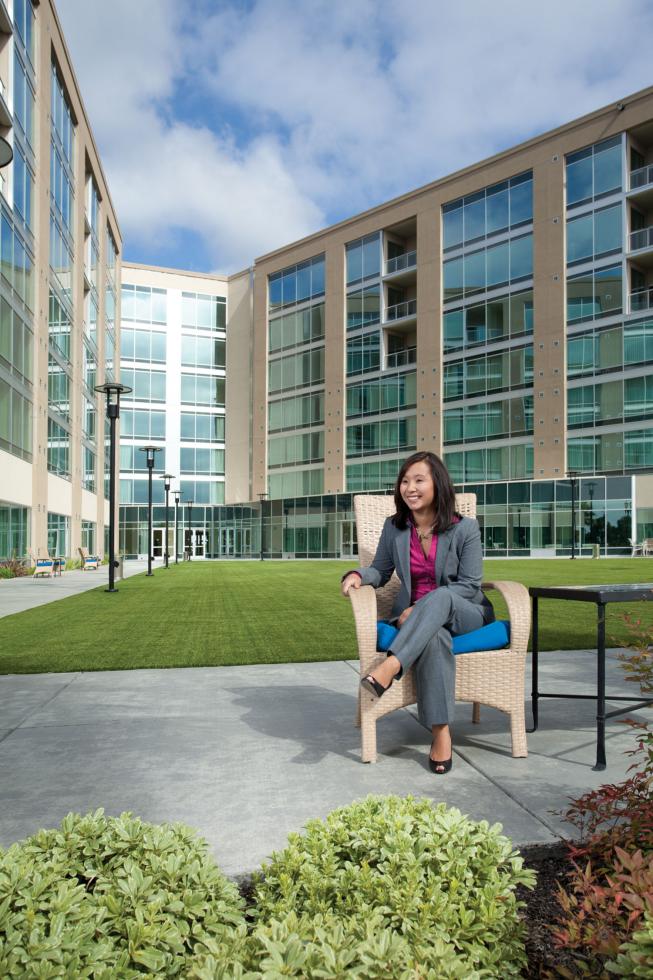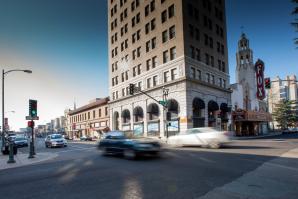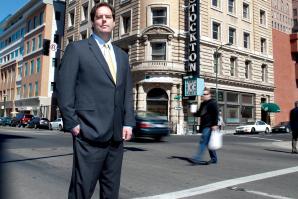Mimi Nguyen, economic development director, Downtown Stockton
Alliance

By the mid-1990s, it was fair to question whether downtown Stockton was on the path to decay. Crime and blight were major concerns that kept visitors and businesses away, and there was little to suggest a turnaround was in sight.
Fast-forward to the present, and that turnaround is evident. Stockton has seen a 15 percent decrease in violent crime since 2002 and since 2008 has shown a net gain of 60 businesses.
“In order for downtown Stockton to improve, we needed a vision,” says Dan Schroeder, board member with the Downtown Stockton Alliance and principal with the law firm of Neumiller & Beardslee. “That vision had to unify the business and property owners and motivate them to begin moving forward together.”
That vision came in the form of the Downtown Stockton Alliance, which launched in 1996. As to its success, the statistics speak for themselves. In addition to the decrease in crime and the increase in business, the number of community events drawing people downtown has more than tripled. The most direct evidence is that the Property and Business Improvement District has been renewed twice. The second renewal was for a 10-year term, which is unusual, especially in 2006 when Stockton began to hit national headlines for the real estate bust.
“It wasn’t a politically popular thing to do, asking business owners to make a financial commitment for another decade when many were focused on just keeping their doors open,” Schroeder says. “But there was a collective decision to look past the immediacy of the economic conditions and focus on what was going to be best in the long term.”
Business owners had to evaluate whether the Alliance was providing value. And therein lies the real story, the one behind the statistics. That value starts with the Alliance’s emphasis on proactive and two-way communication with its members.
“We’re constantly talking to our members about how we can support them and their businesses effectively,” says Mimi Nguyen, economic development director for the Alliance. “We do districtwide needs assessments every 18 months, and we have a communication task force set up specifically to talk to owners about what they need, what services we offer — but they may not be using — and how we can supplement those services.”
As just two examples, this outreach led to an effort with the city to address parking problems in one area of the district, and to the formation of an ad hoc committee to determine whether some services offered to the hospitality sector are truly beneficial in the current economy or should be reconsidered.
“The underlying message has always been that we want the property owners to know that if they have any issues, they can come to the Alliance where those concerns will be heard and something will get done,” Schroeder says.
Strong relationships within every level of city government — from the City Council to the department heads and staff on the ground — are a second critical pillar. For existing business, it makes troubleshooting faster and easier. For new businesses, the Alliance takes on the role of the middleman and advocate, helping to navigate businesses through the bureaucratic maze.
“Instead of going from department to department and eight different steps, we’ll coordinate a meeting where everything can get done in one swoop,” Schroeder says. “I’ve worked in local government for more than 30 years, and I’ve seen real adversarial relationships between the business and public sectors. That doesn’t exist here. ‘We’re going to be partners and work together’ is the attitude on all sides.”
Finally, the Alliance’s ability to help get customer traffic into the city cannot be overlooked. That’s as much a function of the promotions and events as it is the Alliance’s accomplishments in maintenance, infrastructure and aesthetic improvements.
“What people see when they come into downtown creates that first impression,” says Tim Kerr, executive director for the Alliance. “The events get people here. Showing that this is an attractive place is what gets them to stay, shop, dine and come back again.”
One new area of focus is making downtown a place to live, not just visit.
“There are a handful of buildings in downtown that would be prime candidates for urban renewal,” Schroeder says. “There’s a real opportunity to re-use those buildings, appeal to young professionals looking for an urban lifestyle and demonstrate that downtown can be a great place to call home.”
Recommended For You

Slouching Toward Genesis
As reconstruction begins, Stockton searches for itself
Since filing for bankruptcy last year, Stockton hasn’t seen any immediate improvement. The city ended the year with 71 murders, a steady climb from only 26 in 2009. The rise has been attributed to a shrinking police force after the city slashed the department’s budget.

The Stockton Forecast
Acuity with Jeff Michael
Jeff Michael, 42, is the director of the Business Forecasting Center at the University of the Pacific.


